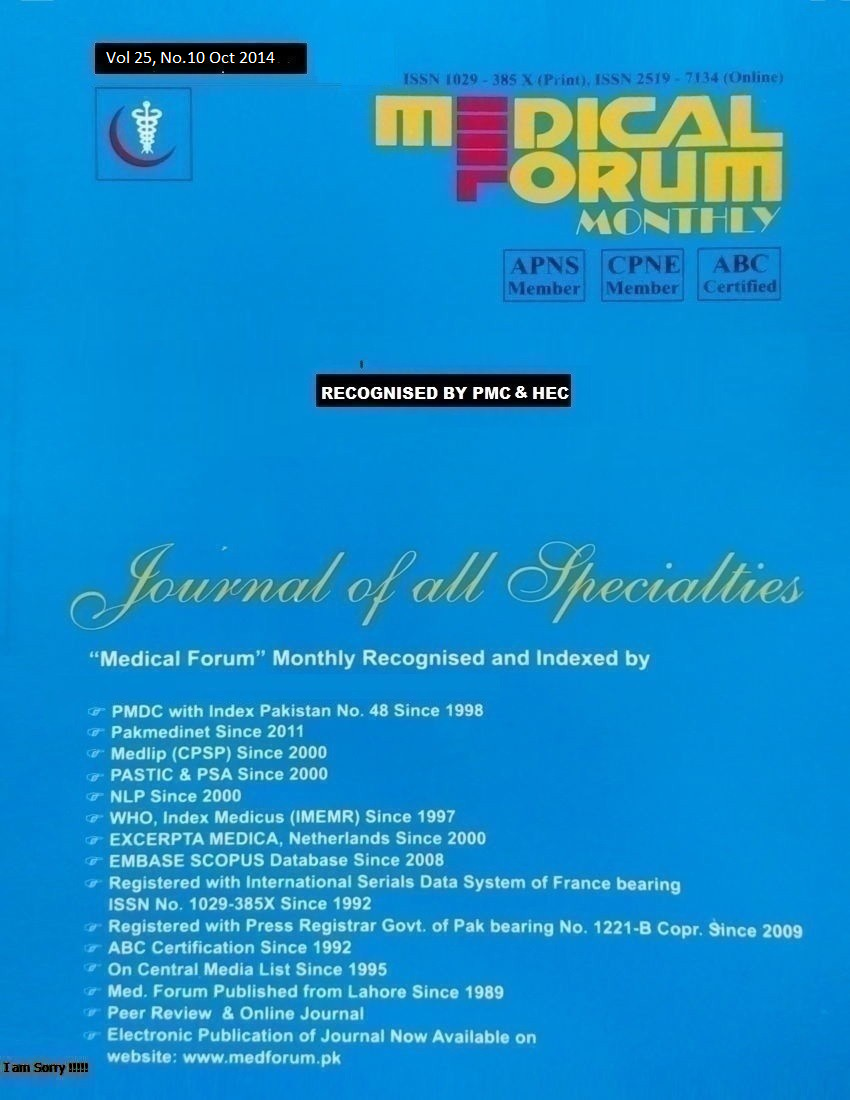
2. Complications of Instrumental Vaginal Delivery in Perimiparus Patients and Foetomaternal Outcome
1. Shehla Raza Channa 2. Farhana Anjum 3. Gulfreen Haider
1. Senior Registrar of OBS and Gynae, Liaquat University Hospital Hyderabad 2. Asstt. Prof. of OBS and Gynae, Isra University Hospital Hyderabad 3. Assoc. Prof. of OBS and Gynae, Isra University Hospital Hyderabad.
ABSTRACT
Objective: To find out complications and foetomaternal outcome in the instrumental (forceps and vacuum) vaginal delivery of the primiparus patients. Study Design: Observational study
Place and Duration of Study: This study was conducted at Gynecological Department of Liaquat University Hospital Hyderabad and Gynecological Department of Isra University Hospital Hyderabad from August 2012 to April 2013.
Materials and Methods: This study contained total 100 number of cases All the perimigravid womens were included in the study and after the admission all require able laboratory investigation were carried out. Forceps and vacuum were used in delivery and this choice between two options (forceps and vacuum) is usually been based on training and traditions. All the instrumental complications and affects on foetomarnal in parimiparus patients were noted during and after delivery and were documented on the attached Performa.
 Results: Present study was contains 100 of the cases, forceps was applied on the 68% of the cases while vacuum assisted deliveries were done in 32% cases. In the forceps assisted deliveries from the maternal complications perineal tear and vaginal trauma were most common as 27% and 20% respectively, while maternal complications associated to vacuum were UTI, Perineal tear, Cervical tear, Vaginal trauma and Heavy bleeding were with percentage as, 06.0%, 06.0%, 05.0%, 04.0% and 12.0% respectively. Neonatal trauma and cephalic hematoma were most common and no deaths were recorded and in the vacuum assisted deliveries, and no deaths were recorded along with 12% neonatal trauma and 10% cephalic hematomas in forceps deliveries.
Results: Present study was contains 100 of the cases, forceps was applied on the 68% of the cases while vacuum assisted deliveries were done in 32% cases. In the forceps assisted deliveries from the maternal complications perineal tear and vaginal trauma were most common as 27% and 20% respectively, while maternal complications associated to vacuum were UTI, Perineal tear, Cervical tear, Vaginal trauma and Heavy bleeding were with percentage as, 06.0%, 06.0%, 05.0%, 04.0% and 12.0% respectively. Neonatal trauma and cephalic hematoma were most common and no deaths were recorded and in the vacuum assisted deliveries, and no deaths were recorded along with 12% neonatal trauma and 10% cephalic hematomas in forceps deliveries.
Conclusion: In the conclusion of this study vacuum having less complication as compare to forceps deliveries but there is no highly difference so the operator should use the instrument according to situation.
Key Words: Primigravid, forceps and vacuum, complication.
